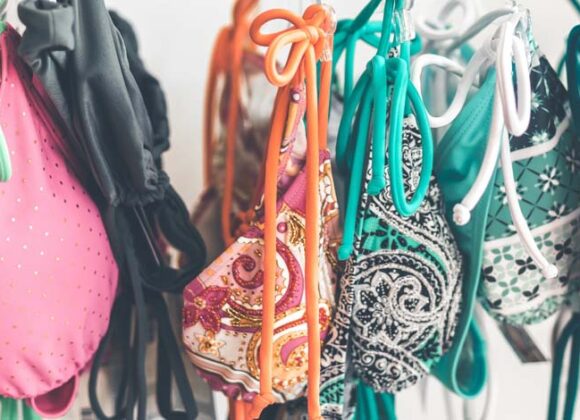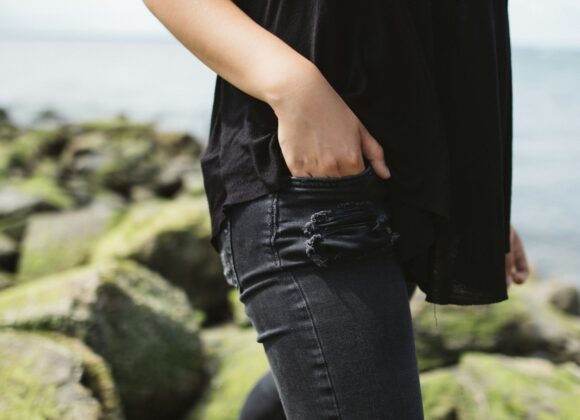Portugal is a country that captivates the senses—whether through its soulful Fado music, golden beaches, or rich culinary heritage. But there is another element that often goes underappreciated: the clothing traditions of Portugal. From the layered and colourful Nazaré Portugal traditional dress to breezy summer dresses in Portugal, fashion here reflects a blend of heritage, identity, and modern lifestyle.
In this guide, we’ll take you on a journey through Portugal’s dress culture: exploring traditional costumes, how locals dress today, the rise of summer fashion, and what travellers should know about Portugal dress up for different occasions.
The Historical Roots of Portuguese Dress
Fashion in Portugal has always been closely tied to its history and geography. For centuries, Portuguese clothing reflected the daily life of fishermen, farmers, and artisans. In coastal villages like Nazaré, traditional attire carried symbolic meanings tied to the sea, while inland regions showcased agricultural and pastoral influences.
Portugal’s traditional dresses were not just clothing—they represented regional pride, social status, and even marital status. Women’s costumes often included elaborate embroidery, jewellery, and specific colours that conveyed identity. Meanwhile, men’s outfits were designed for practicality, whether fishing at sea, tending vineyards, or herding animals.
As we’ll see, these traditions still influence Portugal’s modern fashion scene, blending old and new in a way that continues to define the country’s cultural fabric.
Nazaré Portugal Traditional Dress: A Symbol of Heritage
One of the most iconic traditional attires in the country is the Nazaré Portugal traditional dress. Nazaré, a small fishing town on Portugal’s central coast, is famous today for its giant waves that attract surfers from around the world. Yet, long before surf culture arrived, it was known for the striking costumes worn by its women.
The Seven Skirts Tradition
The Nazaré women traditionally wore seven layered skirts—a style full of symbolism. Some say the skirts represent the seven days of the week, others the seven colors of the rainbow, or even the seven waves of the sea. Whichever interpretation you choose, the imagery ties directly to life in a coastal town where the sea dictated rhythm and livelihood.
Design and Accessories
• Skirts: Colourful, layered, and often embroidered with lace or floral motifs.
• Blouse & Shawl: Typically, white cotton or linen, covered with a wool or fringed shawl for warmth.
• Apron: Embroidered aprons added both decoration and practicality.
• Jewellery: Gold necklaces, crosses, and earrings were common, symbolizing wealth and faith.
Men’s outfits in Nazaré were simpler but equally distinctive—black trousers, checked flannel shirts, a red sash, and a traditional wool cap. Fishermen also wore heavy knitted sweaters for sea work, often decorated with family symbols.
Today, the Nazare Portugal traditional dress is worn with pride during festivals, religious processions, and folk dances. It remains a cultural emblem, connecting locals to their fishing heritage.
Traditional Dresses Across Portugal
While Nazaré may be the most famous, each region in Portugal has its own unique dress traditions.
Minho Region
Known for vibrant colours, the women of Minho wear richly embroidered skirts and bodices, often accompanied by gold filigree jewellery. The embroidery, called Lenos dos Namorados (sweetheart scarves), carries motifs of love and devotion.
Madeira and the Azores
Island costumes are cheerful and practical, often including striped wool skirts and distinctive cone-shaped hats. These outfits reflect both maritime life and island traditions.
Alentejo Region
In southern Portugal, clothing reflected the needs of farmers and shepherds. Long woollen cloaks, wide-brimmed hats, and sturdy boots were common, offering protection against the region’s harsh climate.
Douro Valley and Northern Portugal
Here, women often wore black or dark dresses as a sign of humility and religious devotion. Lace-making and fine embroidery also flourished, adding elegance to everyday wear.
Each style tells a story about its people, shaped by geography, economy, and cultural values.
The Role of Dresses in Portuguese Festivals
Traditional dresses in Portugal are not only historical—they are alive today through festivals and religious celebrations. During annual processions, pilgrimages, and cultural fairs, women proudly wear folk costumes to honor their ancestors.
• Festas de Nossa Senhora da Nazaré – Women dress in their seven skirts, while men wear their seafaring outfits.
• Romario’s in Minho – Pilgrims showcase brightly embroidered costumes and gold jewellery, transforming entire towns into a sea of color.
• Madeira Flower Festival – Locals wear floral-inspired dresses, combining traditional cuts with contemporary creativity.
These occasions highlight the role of clothing as a living tradition, not merely a relic of the past.
Summer Dresses in Portugal: Modern Elegance
While traditional attire is worn mainly during festivals, modern Portugal embraces chic and comfortable fashion—especially during the warm season. With over 300 days of sunshine in some regions, it’s no surprise that summer dresses in Portugal are an essential part of everyday wardrobes.
Fabrics and Styles
Portuguese summer style is all about light, breathable fabrics:
• Linen and Cotton: Perfect for Lisbon’s warm streets or the Algarve coast.
• Floral Prints: Reflecting the Mediterranean love for color.
• Flowing Maxi Dresses: Ideal for beach towns and evening strolls.
• Casual Sundresses: A go-to choice for cafes, sightseeing, and relaxed gatherings.
Coastal Influence
Portugal’s proximity to the Atlantic inspires a nautical aesthetic—think stripes, blues, and whites. Beach towns often see dresses paired with woven hats, espadrilles, and light shawls for breezy evenings.
City Chic
In urban centres like Lisbon and Porto, women prefer elegant yet practical outfits: tailored dresses, midi cuts, and minimalist accessories. Portuguese fashion is understated but sophisticated, mirroring the country’s balance of tradition and modernity.
Portugal Dress Up: What to Wear on Different Occasions
For travellers and locals alike, knowing how to dress up in Portugal is important. Portuguese people value neatness and style, even in casual settings.
• Everyday Wear – Casual but polished. Women wear dresses, skirts, or jeans with blouses; men often choose chinos or jeans with shirts.
• Religious Visits – Modesty is key. When entering churches or monasteries, covering shoulders and avoiding very short dresses is respectful.
• Festivals – Locals may wear traditional costumes, while visitors often dress in festive summer attire.
• Formal Events – For weddings or banquets, women wear elegant dresses (often long or cocktail length), while men wear suits.
• Beach Days – Sundresses, cover-ups, and light fabrics are the standard.
In essence, Portugal dresses up culture blends casual comfort with refined elegance. People avoid looking sloppy, even at the beach or in informal gatherings.
Portuguese Fashion Today: Tradition Meets Modern Trends
Modern Portuguese fashion designers are increasingly drawing inspiration from traditional motifs. Embroidery from Minho, lacework from Nazaré, and floral patterns from Madeira often appear in contemporary collections.
Lisbon Fashion Scene
Lisbon has become a hub for emerging designers who champion sustainability. Many brands focus on eco-friendly fabrics such as organic cotton, linen, and recycled fibers. This aligns with Portugal’s long textile tradition while pushing it toward a modern, responsible future.
Global Influence
Portuguese designers are also gaining recognition internationally, with brands like Luís Bocchino, Katty Xiomara, and Alexandra Moura showcasing innovative takes on classic styles. The subtle integration of heritage patterns into modern cuts creates a uniquely Portuguese aesthetic.
Shopping for Dresses in Portugal
For visitors, buying a dress in Portugal can be a cultural souvenir. Popular options include:
• Traditional-inspired Dresses: Found in Nazaré or northern Portugal, featuring embroidery and lace.
• Summer Dresses from Local Designers: Available in Lisbon boutiques or markets.
• Handmade Linen Dresses: Often sold in coastal towns and rural villages.
Markets, artisan shops, and concept stores are the best places to find unique pieces that combine tradition with modernity.
Styling Tips for Visitors
If you’re traveling to Portugal and wondering what to wear, here are a few tips:
- Pack Summer Dresses: Lightweight and versatile, perfect for both sightseeing and evenings out.
- Add a Shawl or Light Jacket: Useful for cooler evenings or religious site visits.
- Comfortable Footwear: Cobblestone streets call for flat sandals or stylish sneakers.
- Dress Smart-Casual for Dining Out: Portuguese dining culture leans elegant, so leave very casual clothes for the beach.
- Blend In with Local Style: Choose simple, chic outfits over flashy or overly casual attire.
- Conclusion
The story of dresses in Portugal is one of cultural pride, adaptation, and timeless elegance. From the layered symbolism of the Nazare Portugal traditional dress to the breezy comfort of summer dresses in Portugal, clothing here reflects both history and lifestyle. And when it comes to Portugal dress up, locals show that elegance doesn’t need to be extravagant—it’s about respect, pride, and a love for style.
Whether you’re admiring locals in festival costumes, shopping for a linen sundress in Lisbon, or simply observing how Portuguese people carry themselves with understated grace, you’ll find that fashion in Portugal is as captivating as its music, food, and landscapes.
Portugal’s dresses are more than just fabric—they are threads of history woven into modern identity, a living symbol of a nation that celebrates both tradition and the beauty of everyday life.




